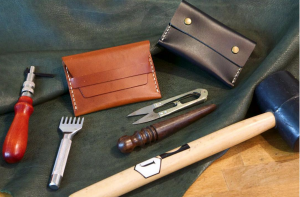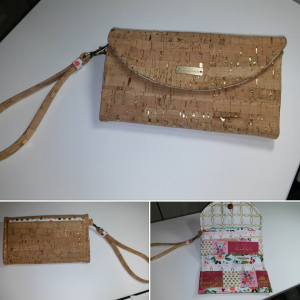In this part, we will introduce the soundbox, a shortsighted intelligent table built out of cowhide, wood, and electronic segments. Since this venture was executed in Turkey, we decided to incorporate components of the social highlight of conventional Turkish tea functions into the plan. The essential thought was that this table could be a mingle and investigate its intelligent properties while hearing pieces from our encounters in Turkey. Always leather workshop singapore is famous for leather works. The size of the crate was 100cmx100cm and its tallness 50cm, like the basic low coffee tables that we encountered in Istanbul. Intuitive tables of comparative arrangements have been investigated previously, yet ordinarily with a tabletop screen show or with an emphasis on specific intuitive qualities. Here, in any case, the center is around our encounters from the creating cycle identified with calfskin as a material that could be utilized in intelligent antiquities, as opposed to on how tabletop surfaces can fill in as nonexclusive intelligent interfaces. This was our first investigation on how such materials could be joined when making intuitive articles, where cowhide could fill in as a skin-close intelligent interface.
The usefulness of the soundbox itself was exceptionally shortsighted

The top surface of the case was canvassed in a deviated example of cowhide pieces (because of the visual character of the task), and separated into five press-touchy regions working as ‘pushbuttons’, each setting off a recorded sound document to play. The motivation behind why we chose simple material contribution for setting off the sound (‘pushbuttons’) was to investigate how calfskin could be utilized as a material for skin-close collaboration. After putting the large cowhide piece on the highest point of the wooden development, it was simply the real nature of calfskin (delicateness and thickness) that drove us to create the catches on its genuine surface. In this cycle, we followed a cautious visual and material language for collaboration, shifting just the surface of the ‘button’ regions while leaving them smooth, unique cowhide surfaces on the non-intuitive ones. To make these progressions on the calfskin surface we utilized distinctive cowhide creating instruments, scratching each ‘catch’ and along these lines providing for every zone an alternate surface and subsequently additionally a shading conceal. Another ‘pushbutton’ region looking like a hover worked as a stop button. To deal with the sound documents and control the information yield we utilized Arduino and Processing open programming. The computerized equipment utilized for the intelligent part was put inside the crate, comprising of a PC, an Arduino Uno microcontroller, and a couple of speakers. The cowhide surface utilized for the intuitive interface was estimated and cut by hand instruments, to make an ideal fit to space where the wood had been recently eliminated. This cycle required a lot of accuracy in both computing the measurements and cutting the calfskin piece since the wood and calfskin should fit pleasantly one close to the next to make a smooth surface.
Creating Pressure-delicate Sensors
Using Leather For making the ‘pushbutton’ sensors utilizing calfskin as the outside pressing factor touchy surface, we took motivation from how basic material pressing factor sensors are crafted. Starting there, we utilized sewed conductive texture, conductive string, and links. Two conductive texture pieces were utilized for each ‘button’ territory, one put on the rear of the cowhide surface and the other set on a thick cardboard surface confronting the leather, However, rather than pressure sensors made out of the texture, we rapidly discovered that calfskin and its particular affordances made it marginally extraordinary when utilized for comparable applications.
